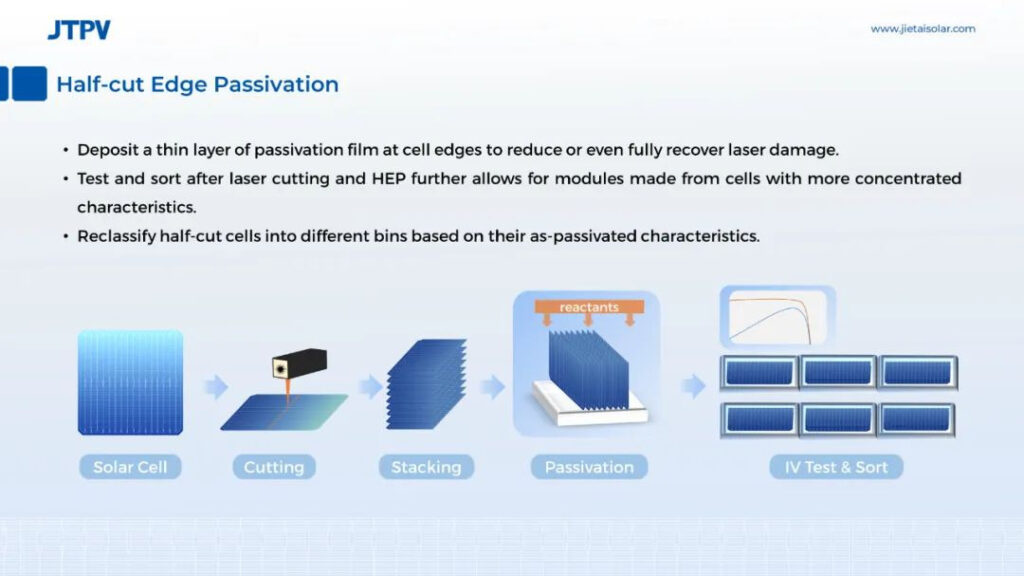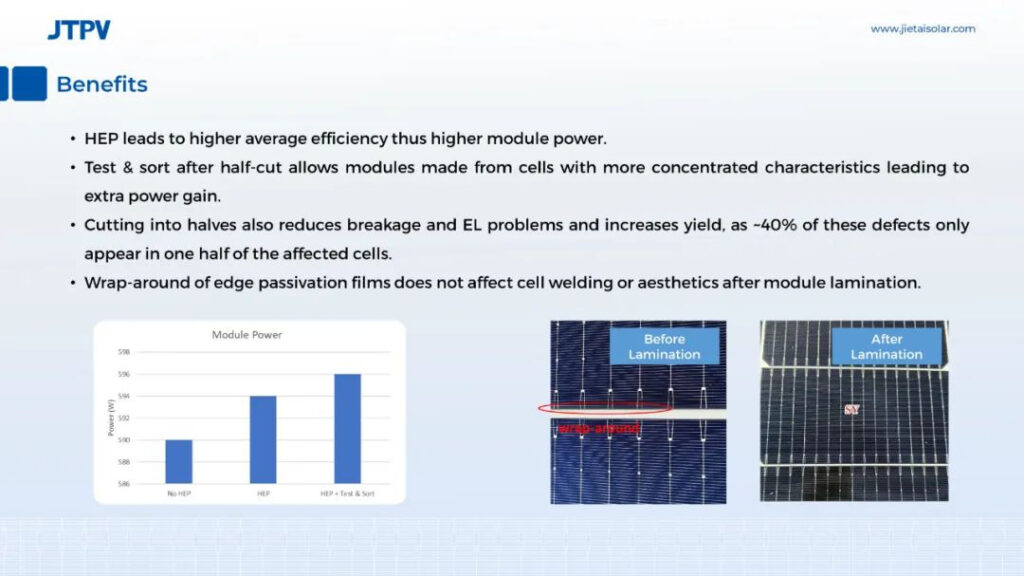
JTPV R&D Manager Dr. Xinrui An has addressed an academic conference in Turkey on the topic of “High-Efficiency N-type Cell and Module Technologies”, showcasing the company’s cutting-edge N-type cell technologies and core achievements. As of the end of Q1 this year, JTPV had seen overseas sales increase from 0.29% to 11.6% of its total sales, with An’s presentation focusing on zero busbar and half-cut edge passivation (HEP) techniques as pivotal innovations reshaping the industry.
An stated that zero busbar (0BB) technology heralds a paradigm shift in solar cell design, eschewing traditional busbars for a more streamlined approach that enables a 0.7-1% increase in CTM efficiency. 0BB not only significantly reduces silver consumption, but also ushers in a new era of cost-efficiency, with potential savings of up to 40% for cell manufacturers significantly contributing to LCOE reduction.
The half-cut edge passivation technique has emerged as a promising approach to improve module power output. By adding a CVD process after laser cutting, laser-damaged edges can be almost fully repaired. With an extra test and sort step to reclassify the half cells, an increase in power output of up to 6W is achievable for a standard 182-72 module, corresponding to a CTM increase of around 0.8%.

Following the success of the “MoNo 1” series launched last year, the company’s “MoNo 2” incorporates the cutting-edge HEP technique mentioned above and “Wave Back Surface Field” (J-WBSF), enhancing cell passivation and bifaciality. These developments increase module power by over 6W and bifaciality to 90%. The half-cell design reduces fragmentation and EL defects, improving overall efficiency. For standard 72-cell 182-format modules, power output can reach 585-600 W.
A key feature of the “MoNo 2” is its refined rear side design, JTPV having modulated the thickness and properties of the passivation layers between rear metal fingers, creating an optically inhomogeneous rear structure. Without affecting cell efficiency, an improved bifaciality of up to 90% can be achieved. The enhancement is particularly beneficial in high albedo environments, where it translates to an additional power gain of 5-19% over previous cell designs.

